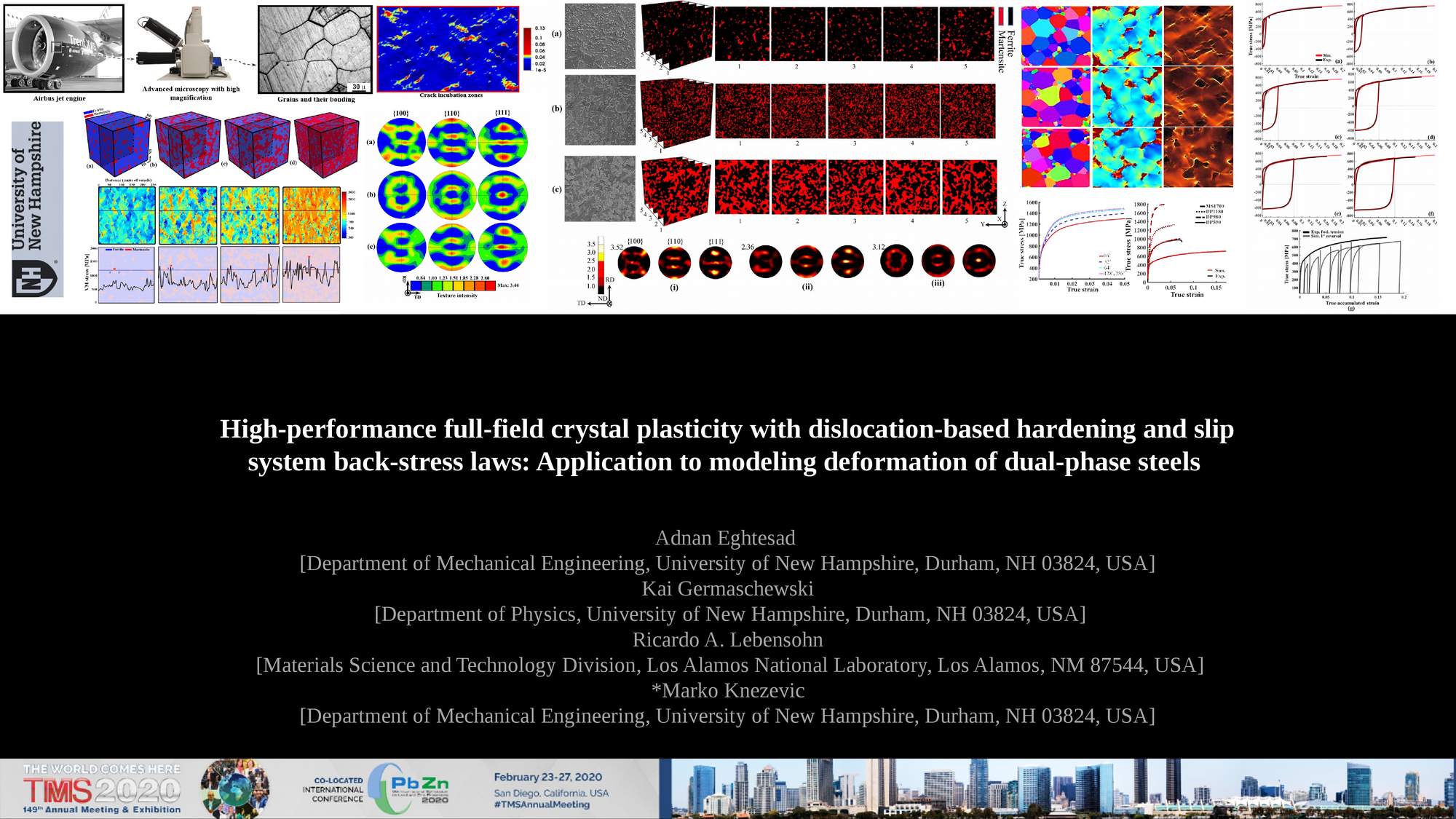Title:
High-performance full-field crystal plasticity with dislocation-based hardening and slip system back-stress laws: Application to modeling deformation of dual-phase steels
Slideshow Presentation
Best viewed by downloading
Preview Converted Images may contain errors

Abstract
This paper presents a microstructural cell-level crystal plasticity model aimed at predicting elasto-plastic, anisotropic, rate- and temperature-sensitive deformation of polycrystalline aggregates subjected to large plastic strains. The crystallography-based model embeds strain-path aware dislocation-based hardening and slip-system-level kinematic back-stress laws. The crystal-level response is linked to the microstructural cell-level response using an elasto-viscoplastic fast Fourier transform-based (EVPFFT) micromechanical homogenization. The overall model is ported on a high-performance computational platform integrating a graphics processing unit (GPU) to facilitate computationally efficient modeling of high-resolution microstructures. The high-performance multi-level EVPFFT is applied to modeling monotonic and cyclic deformation of dual-phase (DP) steel sheets. To this end, the effective elastic and flow stress behavior under monotonic and cyclic deformation is calculated for several steels: three DP, DP 590, DP 980, and DP 1180, and one martensitic (MS), MS 1700. Crystallographic textures and phase fractions of these steels are characterized using electron microscopy along with electron-backscattered diffraction to initialize the models. A comprehensive set of Young's modulus, Poisson's ratio, and flow stress data is used to calibrate and validate the model. The model parameters for ferrite and martensite are identified using data for two steels and used to predict the behavior of the other two streels. The model captures elasto-plastic monotonic behavior as well as the particularities pertaining to large strain cyclic deformation characteristics such as non-linear unloading upon the load reversal, the Bauschinger effect, and changes in hardening rate during strain reversals based on evolving microstructure including the evolution of dislocation density and crystallographic grain reorientation. In addition, it offers insights into the role of back-stress and dislocation annihilation on the cyclic deformation of DP steels.
Authors
| First Name |
Last Name |
|
ADNAN
|
EGHTESAD
|
Leave a comment
Submission Details
Conference GRC
Event Graduate Research Conference
Department Mechanical Engineering (GRC)
Group Oral Presentation
Added April 13, 2020, 3:11 p.m.
Updated April 13, 2020, 3:13 p.m.
See More Department Presentations Here